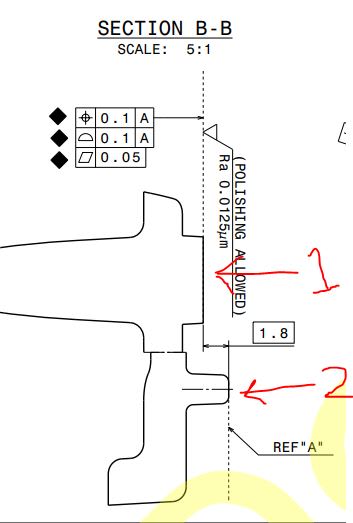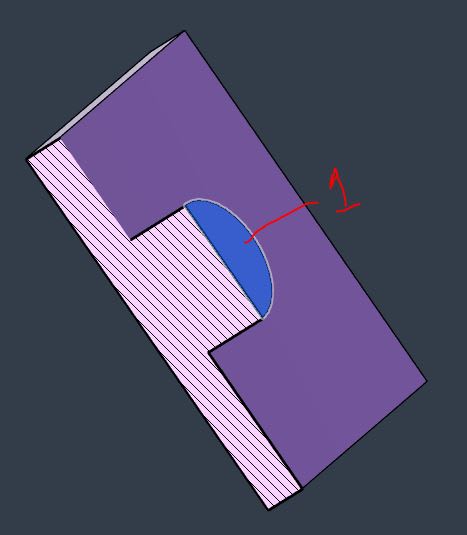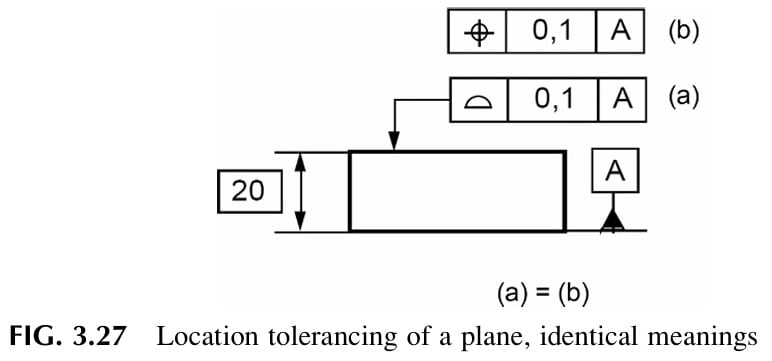Hi Everyone,
I've got another ISO GPS question for you from a customer-supplied print:
In the image below, aren't the [Position|0.1|A] & [Profile|0.1|A] controlling the exact same thing? I'm struggling to get a response from the customer on this one, was hoping you could provide some insight. To me, both controls create a 0.1mm tolerance zone nominally located [1.8] from Datum A. Am I interpreting this incorrectly?
For context, their intent is to control Surface 1 with these callouts (this is a cylindrical feature ~6mm in diameter). Datum A is defined as the end of the standoffs (Surface 2) shown in another drawing view.

I've got another ISO GPS question for you from a customer-supplied print:
In the image below, aren't the [Position|0.1|A] & [Profile|0.1|A] controlling the exact same thing? I'm struggling to get a response from the customer on this one, was hoping you could provide some insight. To me, both controls create a 0.1mm tolerance zone nominally located [1.8] from Datum A. Am I interpreting this incorrectly?
For context, their intent is to control Surface 1 with these callouts (this is a cylindrical feature ~6mm in diameter). Datum A is defined as the end of the standoffs (Surface 2) shown in another drawing view.



